Environmental Initiatives (E)
Environmental Initiatives
The Company will promote the digitization and streamlining of the medical treatment flow in hospitals and the decision-making flow in local governments, thereby reducing environmental impact through the establishment of a paperless work style. In addition, The Company has introduced an ESG investment limit of 100 million yen by 2025 and are considering investing in related companies, indirectly contributing to environmental protection by supporting initiatives related to building a sustainable society, such as CO2 emission reduction, CFC-free measures, securing water resources, and promoting clean energy.
Climate Change and Environmental Pollution Initiatives
| SDGs 17 Goals | Guidelines |
|---|---|
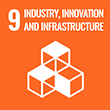
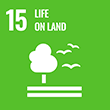 |
Promote Paperless
|
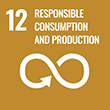
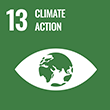
 |
Digitization of internal and external documents and reduction of printed materials
|

 |
Adoption of "COOL BIZ" and "WARM BIZ" campaigns year-round.
|
Information Disclosure Based on TCFD Recommendations
Basic Approach to Climate Change
In accordance with the Prime Market Corporate Governance Code, the Company has conducted a scenario analysis of the risks and opportunities that climate change poses to its business based on the recommendations of the Task Force on Climate related Financial Disclosure (TCFD) and disclosed relevant information. In the future, it will expand the scope of the analysis and reflect the results in its management strategies and will strive to enhance its disclosure of information on financial impacts.
Although the software industry is an industry that emits only a small amount of greenhouse gases from its operations, the Company believes that it is very important for itself to understand and monitor business risks and opportunities and to respond to climate change issues under an appropriate framework, in order to build a sustainable society.
Amidst the growing momentum toward decarbonization throughout society, including the 2050 Carbon Neutral Declaration, the Company has registered its status to the Carbon Disclosure Project (CDP) disclosure system. At the same time, as mentioned above, the Company expressed its endorsement of the TCFD's recommendations and will implement the following disclosures in line with its framework. In order to continue contributing to the formation of a decarbonized society, the Company will take the opportunity of its endorsement of the TCFD recommendations to further promote climate change measures.
Governance
The Company has established a "Sustainability Committee" to promote its efforts to solve social and corporate sustainability issues, including consideration of global environmental issues such as climate change, respect for human rights, and fair and appropriate business activities for all stakeholders including employees, as business opportunities.
The Committee consists of the Representative Director, the Department Manager of the Administration Department, and an Executive Officer as its members. The Committee has established a forum to review, formulate, and evaluate measures twice a year to confirm the current status of climate-related issues and to discuss and take measures to resolve these issues. The Sustainability Committee discusses and finalizes the reported climate-related risks and response policies, which are then reflected in the business activities of each department through the Sustainability Team and monitors the status of the responses.
Under these systems, the Company proactively disclose information on the status of its efforts to address climate change, its most important theme, to its stakeholders, and manage them through the environmental management system and other mechanisms while making continuous improvements.
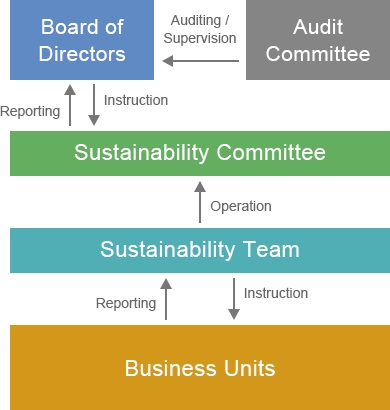
Strategy
In order to properly understand the risks and opportunities of climate change, the Company sets two scenarios and analyzed "acute" and "chronic" as 4°C scenarios, which are "scenarios in which temperatures rise as expected without progress in climate change measures, and physical risks and opportunities arise from this increase”.
On the other hand, the Company analyzed "policy and regulation," "technology," "market," and "reputation" as the 2°C scenario, which is "a scenario in which various activities are implemented to prevent global warming and risks and opportunities arise from the transition to a decarbonized society”.
◆Scenario setup
Multiple internationally accepted climate change scenarios are referenced in the analysis of climate-related risks and opportunities.
| 2°C scenario | A scenario in which policies and regulations are implemented to achieve a decarbonized society and the global temperature increase from pre-industrial times is limited to less than 2°C. Transition risk is high, but physical risk is lower than in the 4°C scenario. | ■IPCC Shared Socio-economic Pathways(SSP 1.9) Shared Socio-economic Pathways(SSP 2.6) ■IEA Net Zero Emissions by 2050 Scenario(NZE) |
|---|---|---|
| 4°C scenario | This scenario assumes that the announced targets, such as national targets in the Paris Agreement, will be achieved. No new policies or regulations are introduced, and global energy-derived CO2 emissions continue to increase. Transition risk is low, but physical risk is high. | ■IPCC Shared Socio-economic Pathways(SSP 8.5) ■IEA World Energy Outlook |
◆Scenario Analysis Procedure
- Step1
Identification and parameterization of key climate-related risks and opportunities
- Identification of climate-related risks and opportunities
- Assessment of risks and opportunities of high importance
- Set parameters related to risks/opportunities of high importance
- Step2
Setting Climate-Related Scenarios
- Based on the information in Step 1, etc., identify scenarios that are closely related to the existing scenarios
- Establishment of contribution-related scenarios(social image)
- Step3
Assessment of financial impact for each scenario
- Analyze the financial impact of each scenario based on the writing scenarios established in Step 2 and the key climate-related parameters identified in Step 1
- Step4
Assessment of the resilience of the strategy to climate-related risks & opportunities and further measures to address them
- Assessing the resilience of our strategy to climate-related risks and opportunities
- Consideration of further measures
◆Scenario Analysis Results
In the scenario analysis, specific studies were conducted for the Company’s major businesses, and a qualitative analysis was conducted based on the major risks and opportunities as of 2030.
| Category | Class | Detail | Business Impact | Scale of influence | |
|---|---|---|---|---|---|
| Risks | Transition risks | Policy and Regulation | Introduction of carbon tax and increase in carbon tax rate | Regulations may increase the tax burden and restrict the available raw materials and manufacturing methods for the production of medical devices. | Small |
| Market | Changing consumer preferences | Failure to meet customer needs for environmental impact reduction leads to lost business opportunities. | Medium | ||
| Reputation | Stakeholder criticism of inadequate disclosure | Stakeholders may view the company's response to climate change issues as inadequate, which will lead to lower reputation among stakeholders, higher recruitment and financing costs, and impact on the company's stock price. | Large | ||
| Physical risks | Chronic | Deterioration in stable supply of raw materials, increase in procurement costs | There is a financial risk of increased power costs due to higher air conditioning loads in the data center resulting from higher average temperatures and the inability to pass these costs on to prices. | Small | |
| Acute | Increase in the rate and severity of extreme weather events | There is a possibility of data loss due to the collapse of the data center or damage to in-house servers caused by extreme weather or natural disasters, or the suspension of operations and services due to human casualties. | Medium | ||
| Opportunities | - | Energy source | Promote introduction of energy-saving technologies | This leads to a reduction in production costs. | Medium |
| Shift to energy security and decentralization | Increased stakeholder recognition and corporate value through proactive involvement in climate change issues. Expanding sales of products and services that contribute to reducing the environmental impact of society. | Large | |||
| Products & Services | Services that contribute to supporting the transition to a decarbonized society | Growing social demand for environmentally friendly management has increased demand for the Group's DocuMaker, C-Scan, and other services that promote online and paperless operations. Sales are expected to improve as services that reduce opportunities for on-site visits and CO2 emissions through the shift of medical systems to the cloud. | Large | ||
| Market | Access to new markets | The widespread use of online medical care and GAP is expected to improve sales as a service that reduces the burden of patient travel and reduces CO2 emissions associated with travel. | Large | ||
| Resilience | Deterioration in stable supply of raw materials, increase in procurement costs | By diversifying development and sales bases, we diversify risk by always approaching customers from the most suitable base for their environment. | Medium |
Risk Management
| Process for identifying and assessing climate-related risks | The Sustainability Committee, chaired by the Representative Director, will identify climate-related risks twice a year based on information gathered from each department, evaluate them in terms of "probability of occurrence" and "impact on the Company’s business," prioritize them, and consider and decide on a response policy for important risks. |
|---|---|
| Process for managing climate-related risks |
Climate-related risks identified and assessed by the Sustainability Committee and policies for addressing them are reported to the Board of Directors at least twice a year and as needed. The Board of Directors discusses and finalizes the reported climate-related risks and response policies. The Sustainability Committee will then pass these policies on to the Sustainability Team, which will monitor the progress of each department's business activities. |
Indicators and Targets
The Company aims to reduce Scope 1 and 2 emissions by 4.2% of GHG emissions from the previous year by 2030, in accordance with the SBT 1.5-degree target. The Company regularly manages the progress of these efforts and are promoting initiatives to further ensure its contribution to the realization of a decarbonized society.
Actual GHG emissions in Scope 1, Scope 2 and Scope3 (FY2022)
| Scope1 | 13 tCO2 |
|---|---|
| Scope2 | 209 tCO2 |
| Scope3 | 4,093 tCO2 |
| Total | 4,315 tCO2 |